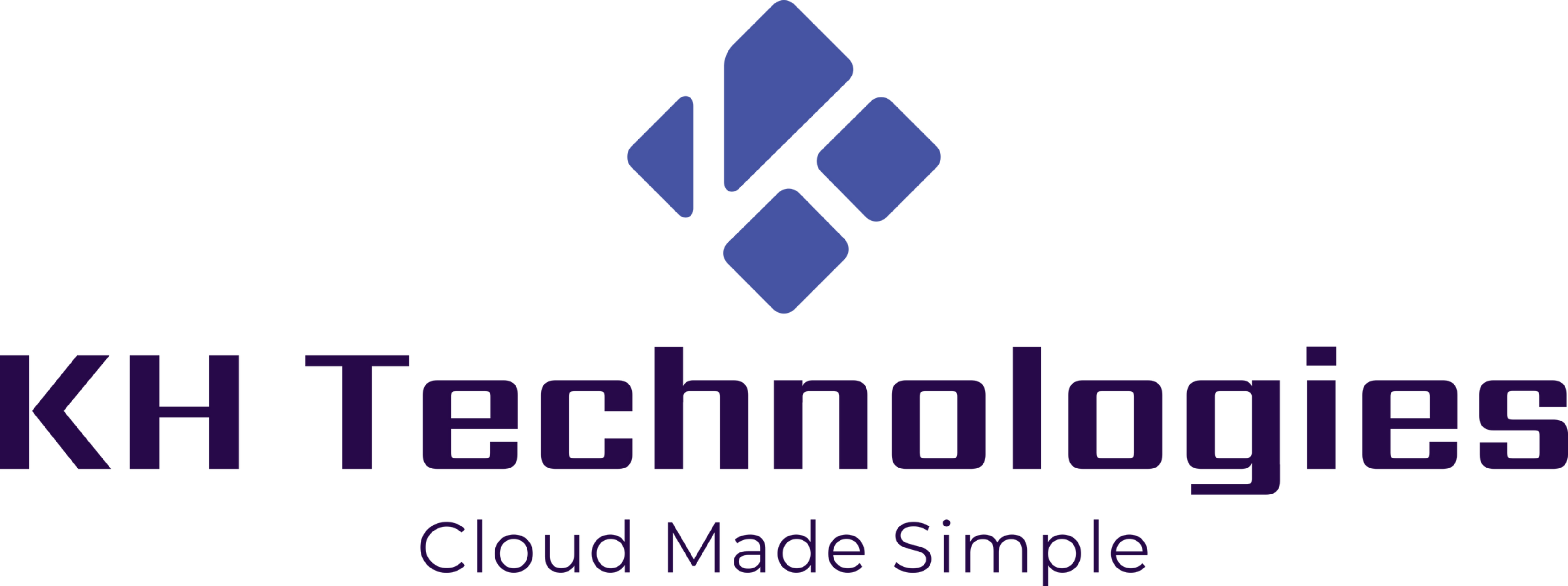Brief Overview of Nutanix and VMware
Nutanix and VMware are two prominent players in the field of virtualization and cloud computing infrastructure. Both companies offer solutions that enable businesses to optimize their IT infrastructure, enhance performance, and streamline management.
However, there are significant differences between the two platforms that set them apart. Nutanix, founded in 2009, revolutionized the industry with its pioneering concept of hyperconverged infrastructure (HCI).
The Nutanix HCI platform combines compute, storage, networking, and virtualization resources into a single appliance or cluster. This integrated approach eliminates the need for separate components and simplifies data center operations.
Nutanix’s innovation quickly gained traction in the market, earning them a reputation as industry leaders. On the other hand, VMware has been a dominant force in virtualization technology for over two decades since its inception in 1998.
The company initially focused on server virtualization but has expanded its product portfolio to offer a comprehensive suite of software-defined data center solutions. VMware’s core offering is vSphere, a leading server virtualization platform used by organizations worldwide to create multiple virtual machines on a single physical server.
Nutanix Offers Several Advantages Over VMware
A Superior Choice for Businesses
After careful examination and analysis of both platforms’ capabilities, it becomes evident that Nutanix surpasses VMware in several key areas essential for modern businesses’ success. This article aims to explore these advantages comprehensively to illustrate why Nutanix stands as the superior choice over VMware. Nutanix’s hyperconverged infrastructure model provides unparalleled scalability and flexibility compared to VMware’s traditional virtualization approach.
With Nutanix HCI, businesses can seamlessly scale their IT infrastructure by simply adding more nodes to their existing cluster. This allows for easy expansion without the need for extensive reconfiguration or complex management of separate components.
In contrast, VMware’s traditional virtualization often requires separate management of compute, storage, and networking elements, limiting scalability and posing challenges during expansion. Additionally, Nutanix excels in simplified management through its Prism interface.
The single-pane-of-glass management solution offered by Nutanix allows administrators to effortlessly handle various administrative tasks from a central location. With Prism, IT personnel can efficiently monitor and manage their entire infrastructure, reducing complexity and eliminating the need for multiple tools.
In contrast, VMware’s vCenter often relies on different tools for managing different aspects of the virtualized environment. This fragmented approach can lead to increased management overheads and complexities.
High-Level Comparison
Scalability and Flexibility: Expanding IT Infrastructure with Ease
In the realm of scalability and flexibility, Nutanix emerges as a clear winner over VMware. Nutanix’s hyperconverged infrastructure (HCI) revolutionizes the way businesses expand their IT infrastructure.
Unlike VMware’s traditional virtualization model, which necessitates separate management of compute, storage, and networking components, Nutanix seamlessly integrates these elements into a single comprehensive solution. This cohesive approach empowers businesses to effortlessly scale their IT infrastructure as needed.
Nutanix’s HCI architecture ensures that organizations no longer face bottlenecks or limitations when expanding their systems. By consolidating compute, storage, and networking resources into a unified framework, Nutanix simplifies the process of scaling up or down.
Businesses can add new nodes to an existing cluster without disrupting operations or requiring extensive reconfiguration. This agility is particularly invaluable in dynamic environments where rapid growth or changing business requirements demand swift adaptability.
In contrast, VMware’s traditional virtualization model often poses challenges when it comes to scalability. Without an integrated hyperconverged approach like Nutanix’s HCI, businesses must manage compute, storage, and networking components separately.
This fragmented paradigm introduces complexities that can inhibit expansion efforts. Scaling VMware infrastructures typically involves intricate coordination between different teams responsible for distinct aspects of the virtualized environment—a process that can be time-consuming and prone to errors.
Simplified Management: Streamlining Administration Tasks
The management aspect is another critical area where Nutanix outshines VMware by providing a more streamlined experience through its Prism interface. Nutanix’s Prism serves as a powerful single-pane-of-glass management solution that brings administration tasks under one intuitive umbrella.
With Prism at their disposal, system administrators can efficiently oversee all aspects of their infrastructure without switching between disparate tools or interfaces. Prism’s unified approach significantly reduces complexity, making routine administrative tasks more straightforward and efficient.
From monitoring and troubleshooting to resource allocation and capacity planning, system administrators can accomplish these critical functions through a single interface. This consolidated management paradigm not only enhances productivity but also mitigates the likelihood of errors that may arise from juggling multiple tools.
In contrast, VMware’s vCenter—while feature-rich-requires administrators to employ a range of tools for managing different aspects of the virtualized environment. The need for separate tools leads to increased management overhead, as administrators must navigate various interfaces and workflows.
This fragmented approach can consume valuable time and effort that could be better utilized elsewhere within the organization. Overall, Nutanix’s Prism interface provides a cohesive management experience that simplifies administration tasks and eliminates unnecessary complexities associated with managing VMware environments using separate tools.
Performance and Efficiency
Distributed Architecture
Nutanix’s distributed architecture sets it apart from VMware’s shared storage architectures, revolutionizing the way data is managed in a virtualized environment. By implementing a distributed file system, Nutanix eliminates the need for centralized storage controllers that can become points of contention and potential bottlenecks.
This approach ensures that data is evenly distributed across nodes in the cluster, allowing for optimal performance and scalability. Unlike Nutanix, VMware relies on shared storage architectures where all data is stored in a centralized location accessible by multiple hosts.
While this model served well in traditional virtualization environments, it introduces challenges when scaling and dealing with high-performance workloads. The shared storage architecture can create contention as multiple hosts compete for access to the same resources, potentially leading to degraded performance.
Data Locality
One of Nutanix’s notable strengths lies in its ability to deliver superior performance through its innovative data locality feature. This unique capability ensures that data is stored close to the applications using it, minimizing latency and enhancing overall performance.
By keeping data localized within each node of the cluster, Nutanix minimizes network traffic and reduces latency associated with retrieving or accessing remote data. In contrast, VMware lacks this granular control over data placement.
Without a specific mechanism for ensuring data locality, VMware may encounter scenarios where applications suffer from increased latency due to remote access of their required data. This lack of optimization can have implications for businesses running latency-sensitive workloads or those requiring consistently high I/O performance.
Nutanix’s distributed architecture and focus on ensuring efficient data locality contribute significantly to its superior performance compared to VMware’s shared storage approach. These advancements empower businesses with faster response times, reduced latencies, improved scalability, and enhanced overall efficiency – all critical factors when considering infrastructure solutions for modern enterprise environments.
Advanced Features and Innovation
Integrated Backup and Disaster Recovery
Nutanix takes a proactive approach to data protection by offering built-in backup capabilities. With features like snapshots and replication, businesses can easily implement comprehensive data protection strategies without the need for third-party solutions. Nutanix’s integrated backup solution simplifies the process of creating backups at regular intervals, ensuring that critical data is safeguarded against accidental deletions, system failures, or malicious attacks.
In contrast, VMware’s approach to backup and disaster recovery requires additional third-party solutions or complex configurations to achieve similar levels of data protection. This introduces complexity and potential compatibility issues.
By relying on external solutions, businesses using VMware may have to navigate through multiple vendors and manage different software tools to implement an effective backup strategy. In comparison, Nutanix’s unified platform simplifies the process by providing robust backup capabilities within its ecosystem.
Conclusion
Nutanix offers a range of advanced features and innovations that set it apart from VMware. Its integrated backup and disaster recovery capabilities provide businesses with peace of mind when it comes to protecting their valuable data. By eliminating the need for complex configurations or reliance on third-party solutions, Nutanix streamlines the entire data protection process.
When choosing a virtualization platform, it is crucial to consider not only immediate requirements but also long-term scalability, management simplicity, performance efficiency, and advanced features. Nutanix excels in each of these areas over VMware.
With its scalable hyperconverged infrastructure architecture, simplified management interface (Prism), superior performance based on distributed architecture with data locality features—all combined with innovative components like integrated backup—Nutanix emerges as the superior choice for businesses seeking a comprehensive virtualization solution. By leveraging Nutanix’s unique offerings at both technological and operational levels while embracing its commitment to continuous innovation in a rapidly evolving IT landscape, businesses can confidently build a robust and efficient virtualized environment that will sustain their growth and success.


